The wind can make or break a cyclist’s day. When we eventually left the border town of La Quiaca – I’m not sure many tourists spend four nights there but we did – we were propelled southwards along Ruta 9 thanks to a glorious hurricane-strength tailwind. Abra Pampa, a town 75km away and originally earmarked as a place to stay that night soon became a lunch spot. Upon reaching the windswept town of Tres Cruces just 1.5 hours later (30km) we decided to push on to the town of Humahuaca.
“This isn’t cycling!” I shouted to Milla. “No”, she replied, “it’s fast rolling!” as we took advantage of a thrilling descent. We had covered 166km (103 MILES), smashing all previous personal bests, and were feeling very smug.
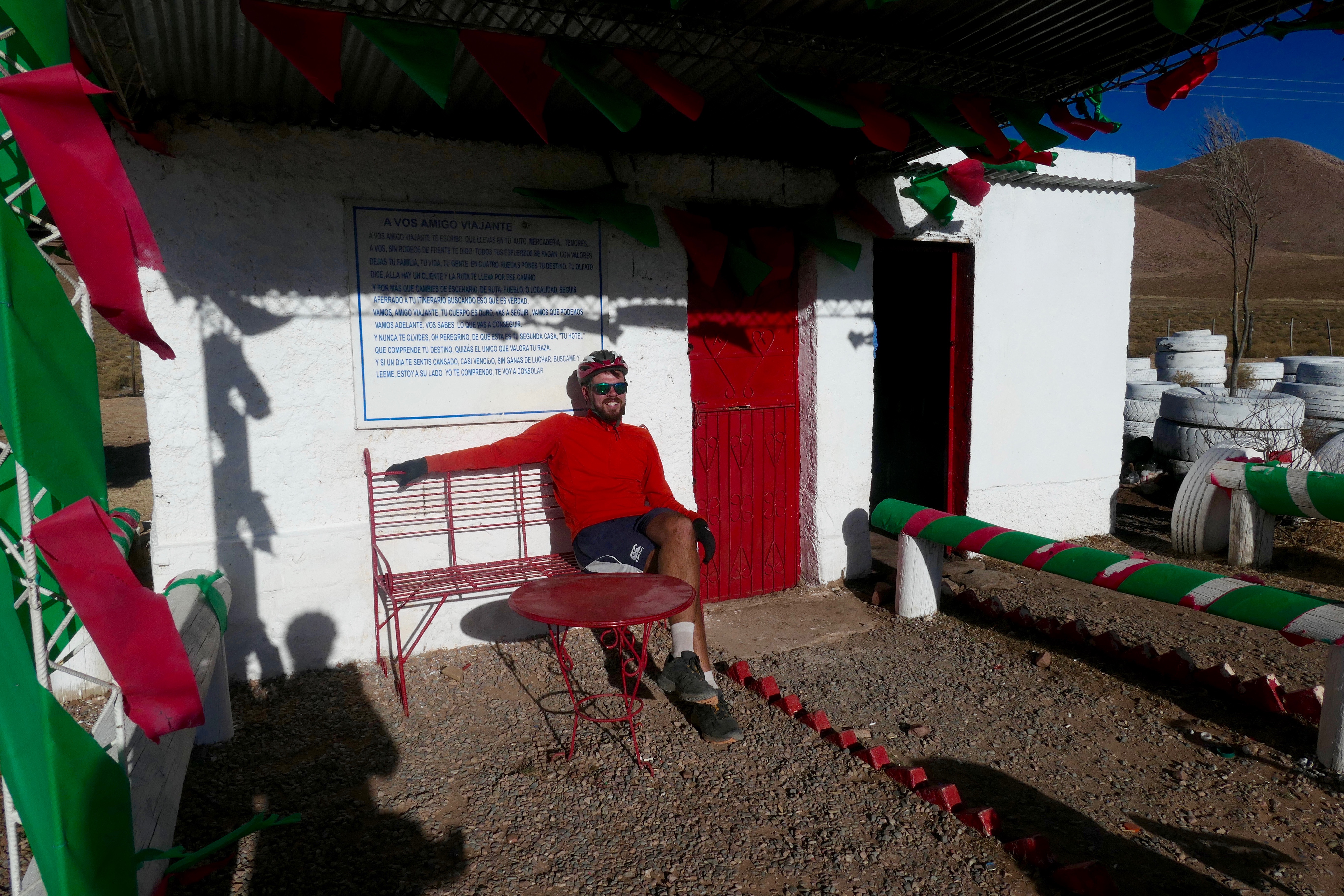
That night I dreamt I wouldn’t need to peddle one bit to Tilcara, a town 45km down the road and our destination for the following night. Joder, if only. The wind changed direction and we were faced with brutal head and side winds. It was a heads-down-earphones-in kind of afternoon, screaming expletives at the wind (and impatient drivers) when our frustrations boiled over.
Despite the head winds, cycling through Argentina immediately felt easier than Bolivia. For starters, the standard of driving is much better and you can drink the tap water. You also know that every town you pass through has a campsite or hotel with hot water, a well-stocked tienda, a panadería with actual fresh bread and pastries, and an heladería with numerous flavours of ice cream to choose from. A scoop of cookie dough and mint choc chip normally does the trick.
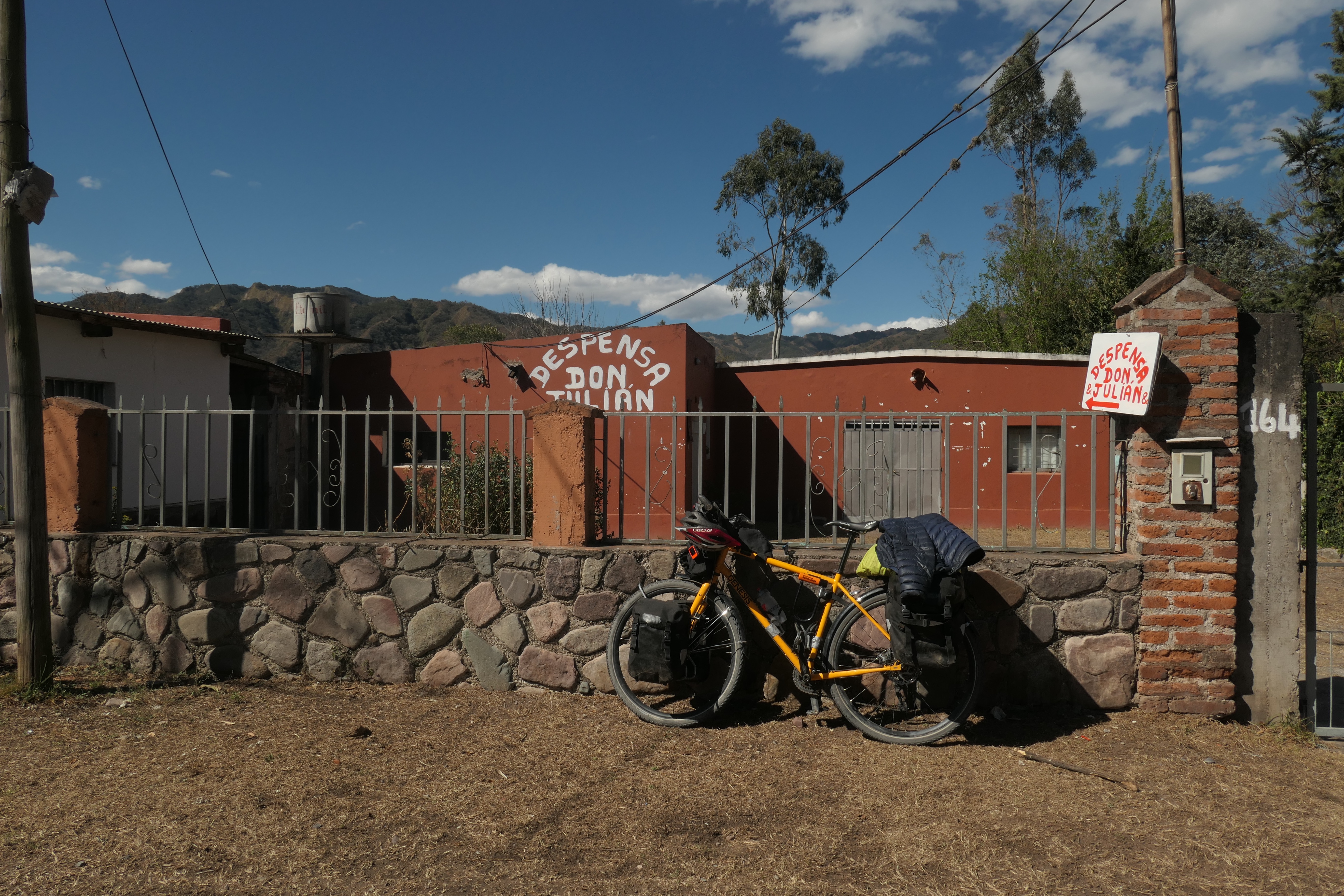


From Tilcara we continued south to the city of San Salvador de Jujuy – £5 to anyone who can correctly pronounce ‘Jujuy’ – where we stayed with Warmshowers hosts Mari and José and their two children, 12-year-old Nacho and 4-year-old Juanita. We were blown away by their generosity – we arrived just before Mari was heading to work but she had kindly made some dough so we could make our own pizzas. We stayed up late into the night drinking mate (pronounced mah-tay) with them – José educated us in this most hallowed of rituals – and discussing whether British or Argentinian politics was more of a mess. When we said goodbye the following morning they gave us a mate beaker for the rest of our journey.
Ruta 9 had so far been surprisingly busy. However, a new dual carriageway between San Salvador de Jujuy and Salta means that the Ruta 9 transforms into a narrow winding road through cloud forest, which eventually descends down to the Campo Alegre reservoir. We could have made it to Salta in a day but wanted to make the most of this peaceful countryside, so we spent the night camping on the shores of the reservoir in the company of a band of wild horses.
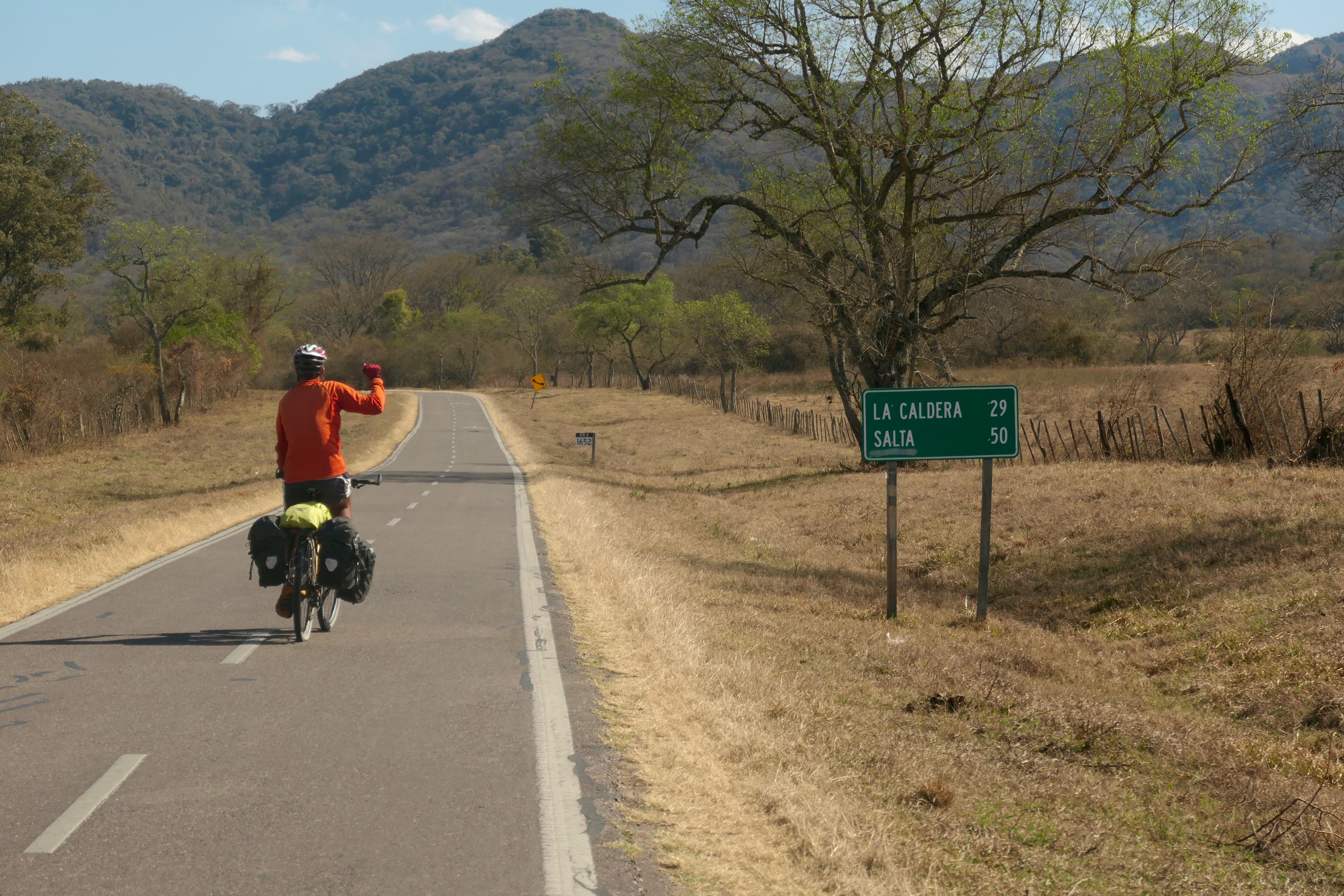


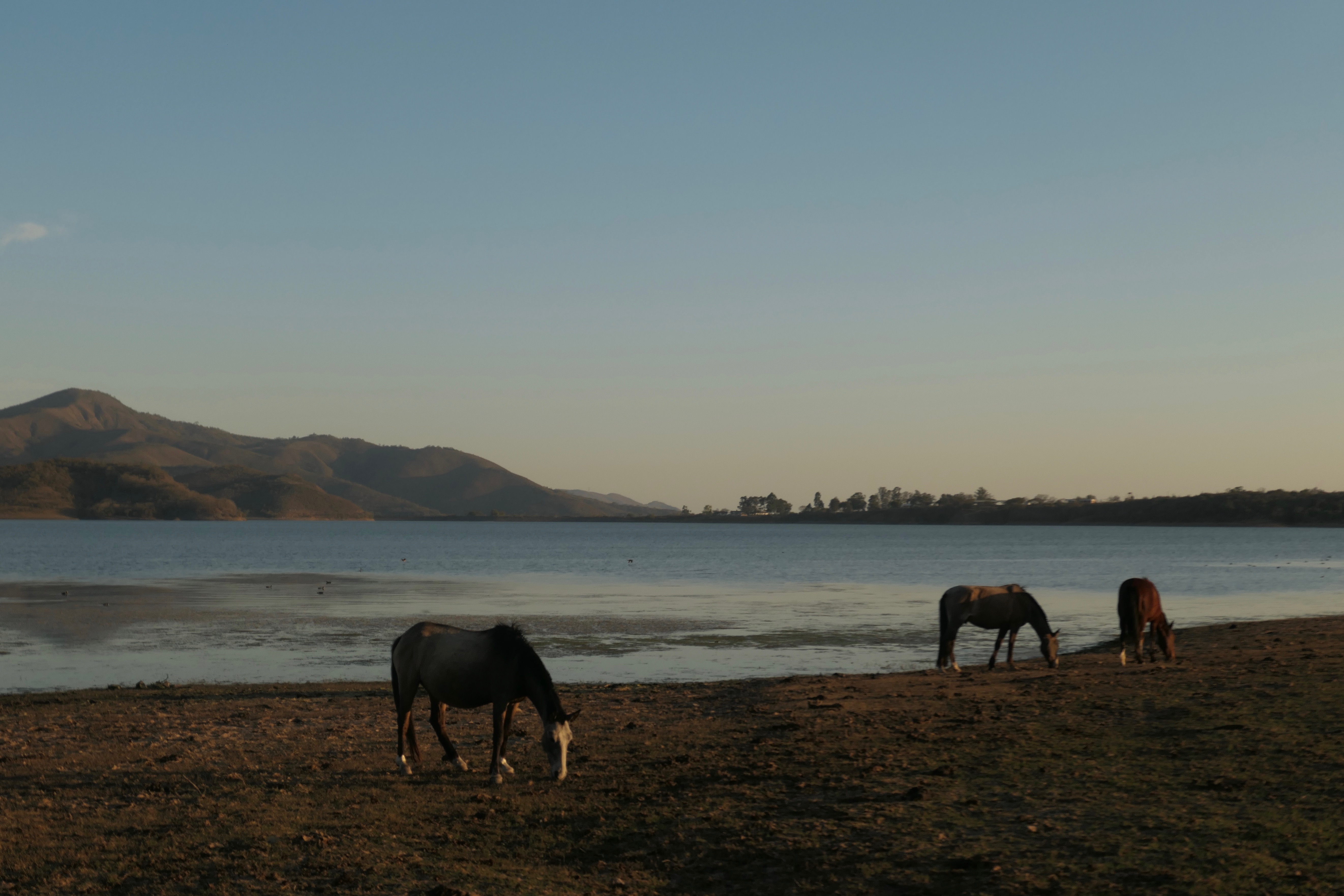

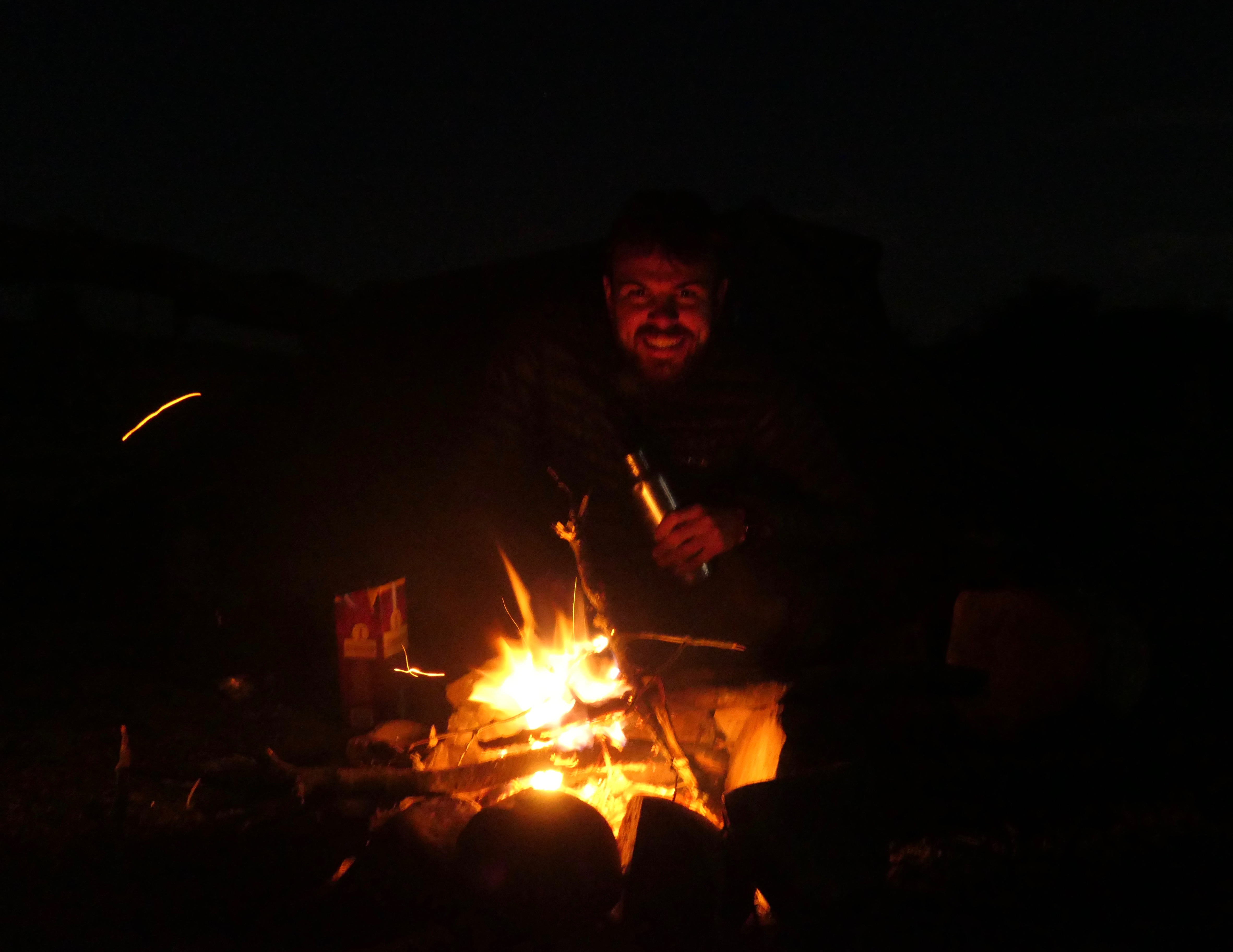
I was in a deep sleep until 3am when the sudden loud neighhhhhhhhh of a nearby horse frightened the life out of me. The following morning we awoke to find another band – that of the music variety – and a group of people waiting for us to pack up and leave so they could start filming their music video!

Overall I was disappointed by Salta except for our night out at La Casona del Molino, a traditional peña. Tables packed closely together; the sound of meat sizzling on an asado; red wine flowing; impromptu sing alongs led by local guitarists wearing gaucho berets. It was here that we also met Roberto and Lidia, a couple from Neuquen, a city in the south. We spent the night chatting away to them and they very kindly invited us to stay with them when they discovered we were cycling through Argentina.

We continued cycling south through the stunning Quebrada de las Conchas. It was here though that my back tyre came away from the rim and without the necessary tools or know-how to fix it, we were forced to stick out our thumbs and hope somebody would give us a lift to the next town, Cafayate, 30km away. We didn’t have to wait long as a white pick-up with a Uruguayan numberplate pulled over and offered us a lift. Fernando, Natalia and their five-year-old son Facundo were on holiday with another family in the car behind.
I often feel guilty stopping people and asking for help – I think it’s a British trait of not wanting to inconvenience anyone – but Fernando and Natalia and their friends could not have been more obliging. We chatted away about our trip, the differences between Uruguay and Argentina, and Luis Suarez, while stopping off at the many viewpoints along the way.


A few days later, once my back wheel had been fixed, we decided to cycle back to the Quebrada de las Conchas to finish off what we had started. We were joined by 20-year-old Marie from Cologne, Germany who we had met at our campsite in Cafayate. After several months backpacking in Argentina and Chile, she bought a bike on a whim in Buenos Aires, hopped on a bus to Cordoba and set off from there pedalling north. She was softly spoken and quite shy but with an inner steal and determination that would see her go far.
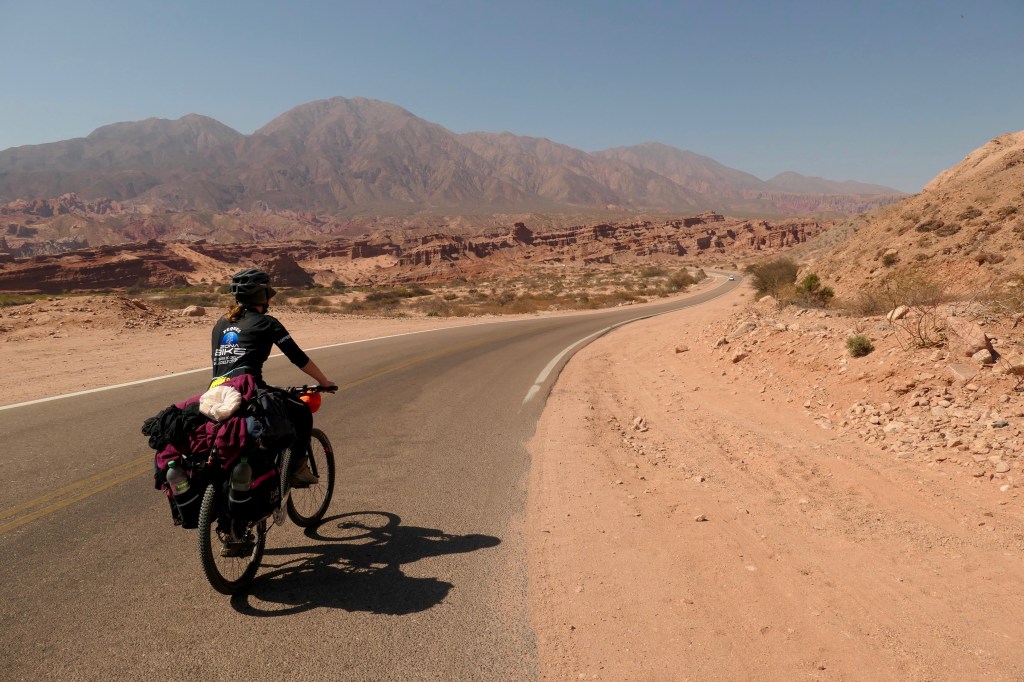
We also came across 35-year-old Kiwi cyclist Jason heading in the other direction. He still hadn’t fully accepted England’s last ball victory over New Zealand in the Cricket World Cup but was grateful when I updated him on the Rugby World Cup results from that morning. Jason was exhausted and slightly delirious having already cycled 80km by 11am on a diet of apples and peanuts. We said we’d hope to cross paths again soon, and agreed it was nice to know there would be other cyclists on the remote stretch ahead.
It was wonderful to be able to pass through the Quebrada de las Conchas once again because I didn’t remember the details of the route from the car. You notice so much more when you’re travelling by bike and have more time to ponder everything. Impressive and imposing rock formations yet intricate and fragile in their apparence. Layers of contrasting coloured rock like a multi-flavoured sponge cake cut open on the Great British Bake Off. Some of these rocks have been named according to their shape, but I felt “El Obelisco” was more like a shark’s tooth and “El Sapo” – the frog – looked more like a mole coming up from it’s burrow. We camped that night on the banks of a small river before returning to Cafayate the following day.
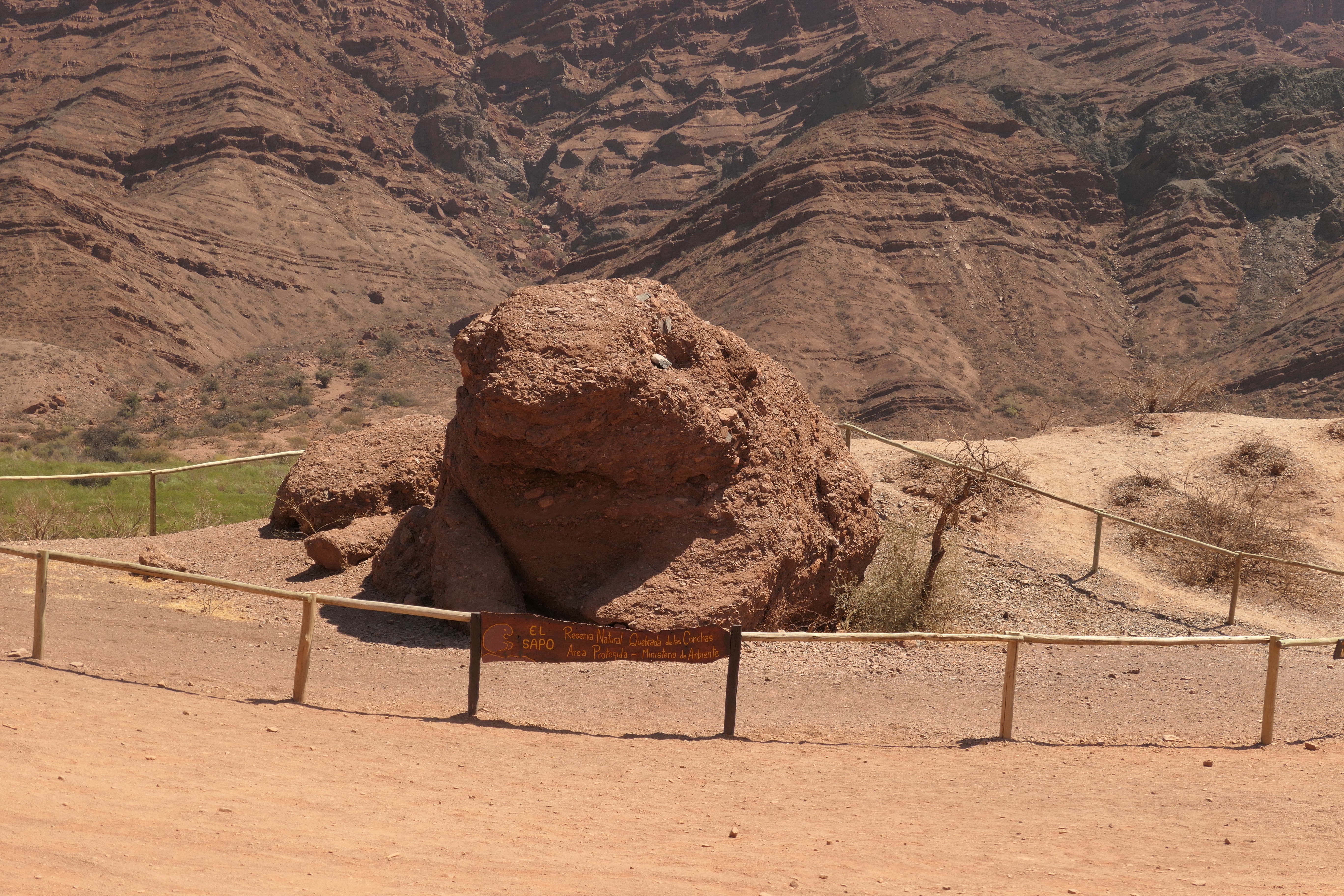




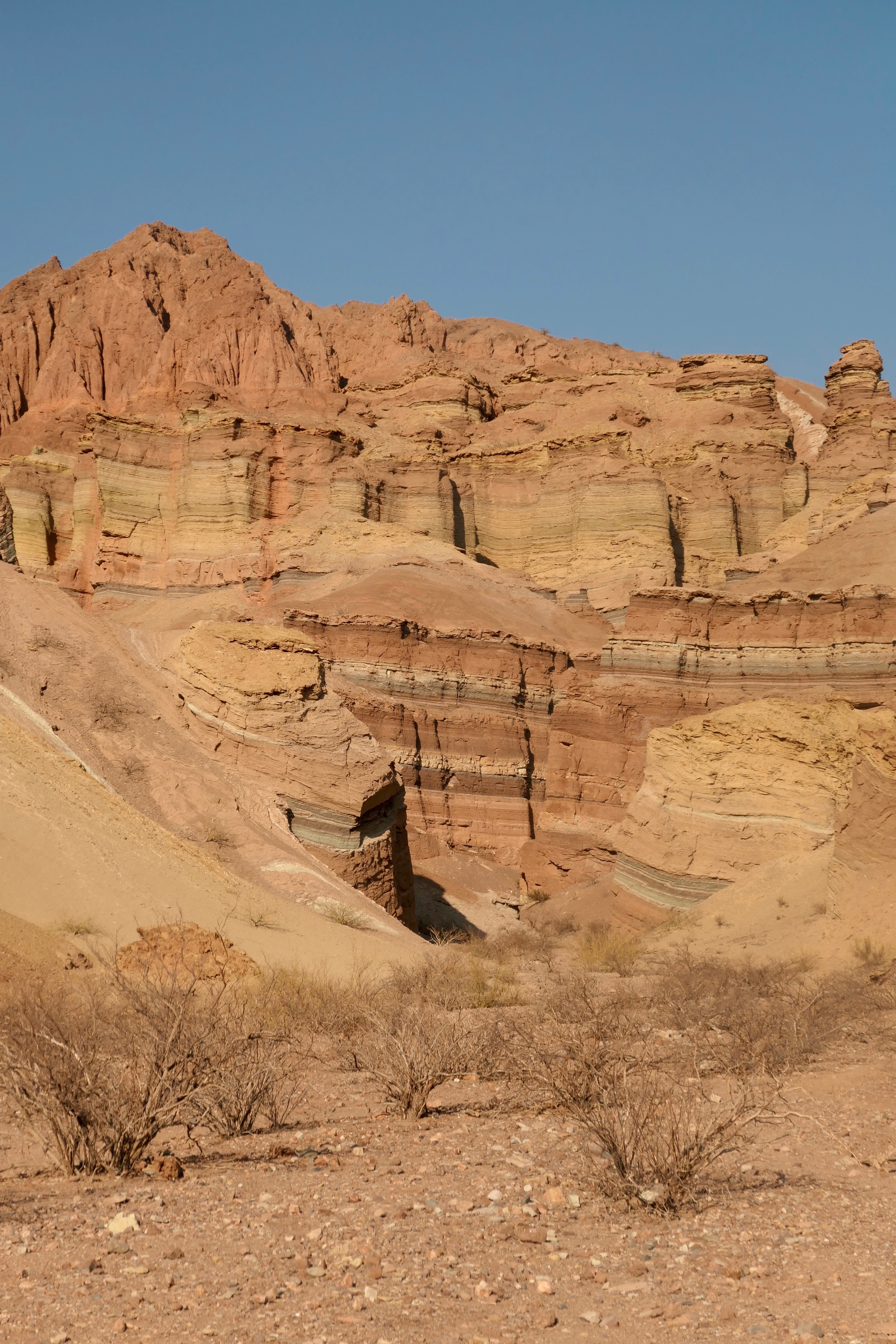
Our first two weeks in Argentina almost felt like a holiday after Bolivia. In Bolivia we’d spend days cycling through remote countryside, and while we got many snapshots of rural life, it was more about the impressive scenery, occasional encounters with locals and a great sense of adventure. It was once we got to the main towns and cities that we would get a feel for the country’s culture, history and politics – one of the reasons we took so many extended breaks. Northern Argentina, on the other hand, throws everything at you at once – between winding our way through dramatic gorges, we were treated to roadside empanadas, characteristic local architecture, gauchos sauntering past on their horses wishing us a “buen dia” and much more – every day we got another slice of Argentinian culture.
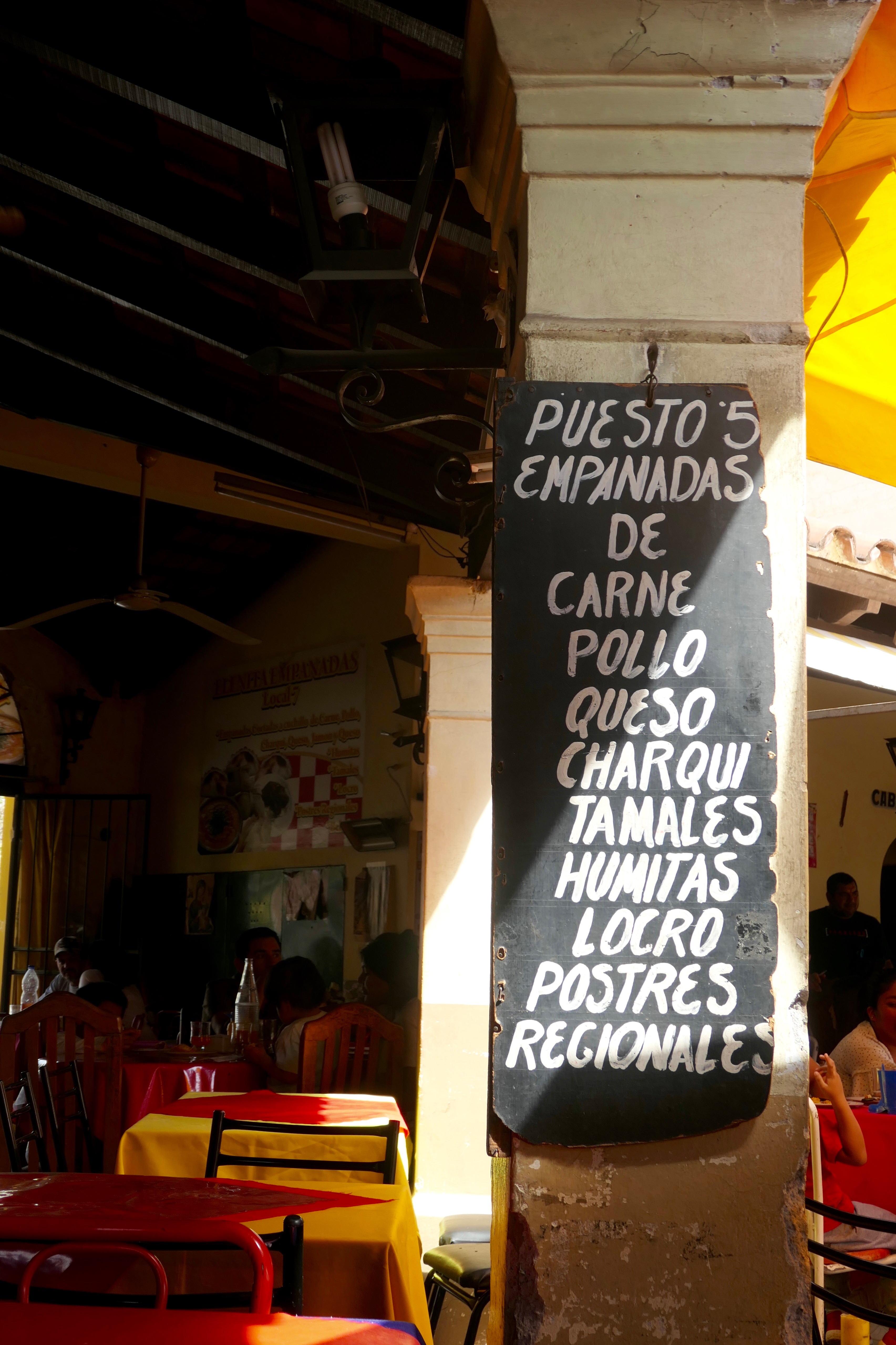

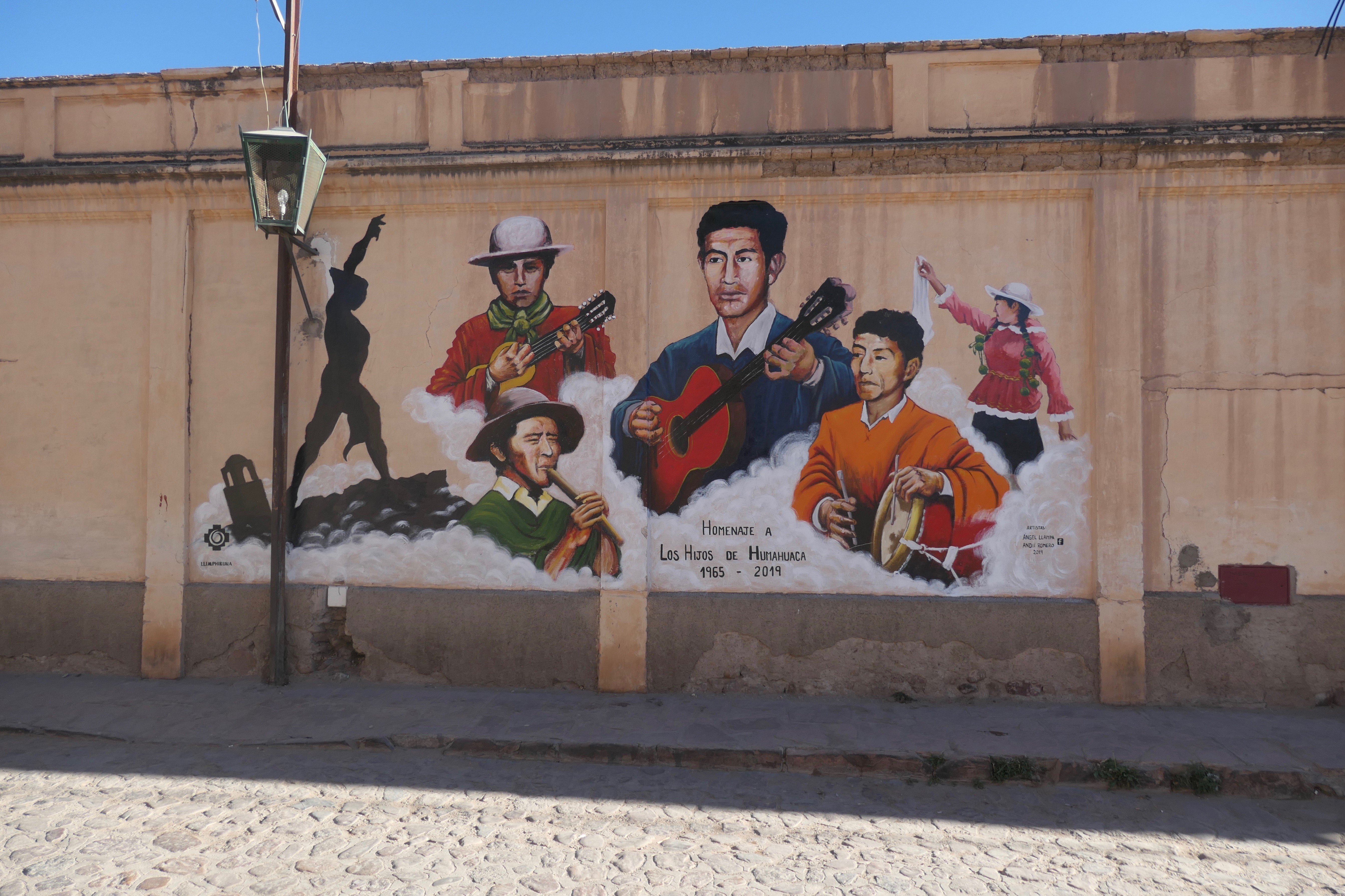
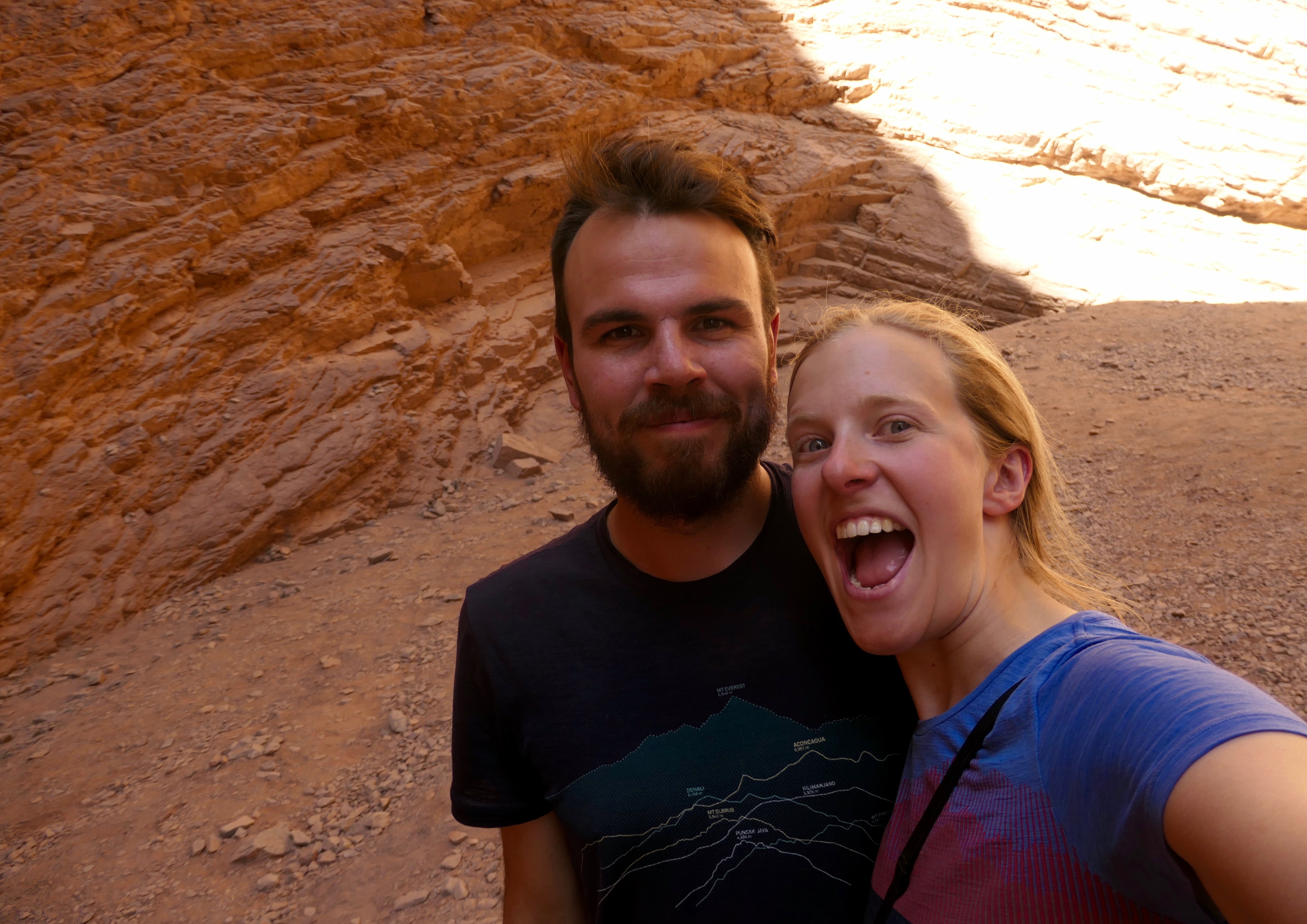
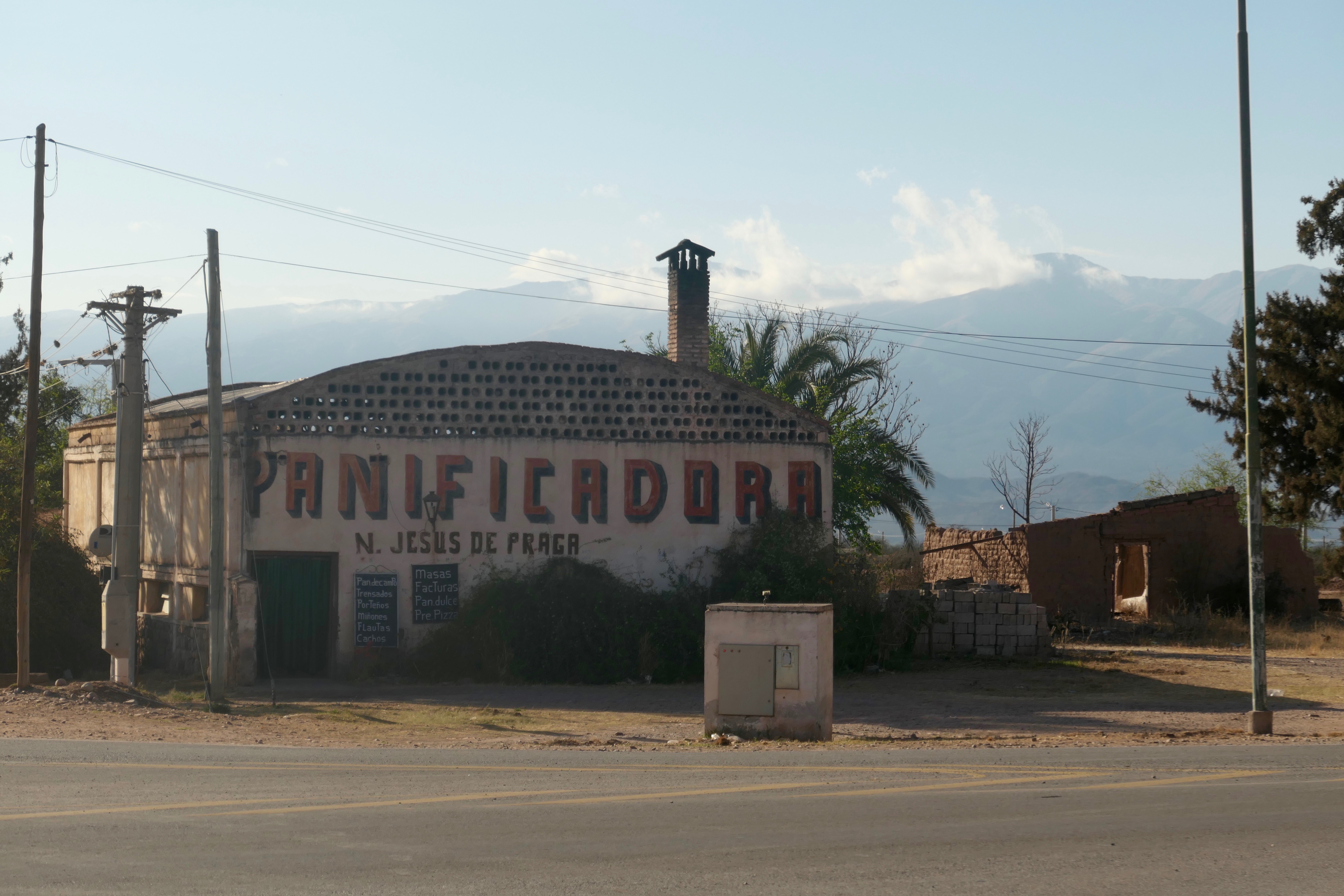
After so much stimulation we were ready to clear our heads a little, and the route ahead was going to be perfect for just that. Next up we were to join the legendary Ruta 40 for 600km of desert, heat and straight, straight roads.


Well done Charlie – another excellent blog and some superb photos. Congrats to whoever is behind the camera! I’m always particularly interested to read about the people you meet along the way. We are certainly not use to the kindness and generosity shown to you by strangers in this country.
LikeLike
I bet mum could pronounce ‘Jujuy’! Another great read. Keep them coming x x
LikeLike
Who-u -whey ??? I didn’t even make beginners + in Spanish
LikeLike